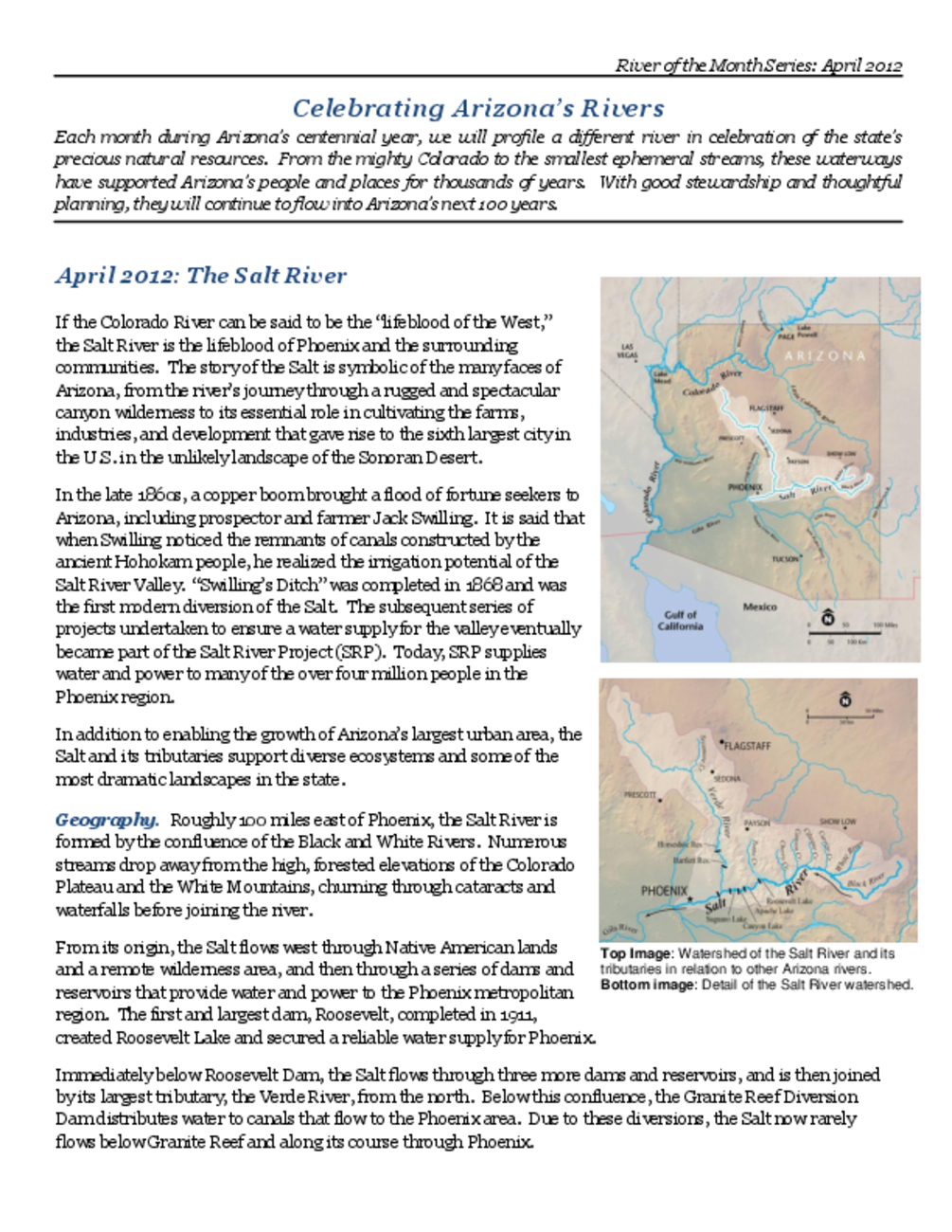Celebrating Arizona’s Rivers - the Salt River
Created as part of a collection of Arizona river overview documents titled "River of the Month Series, Celebrating Arizona’s Rivers". These reports were prepared and supported by Environmental Defense Fund, Sonoran Institute, Sierra Club, Grand Canyon Trust, Western Resource Advocates, and University of Arizona Water Resources Center.
If the Colorado River can be said to be the “lifeblood of the West,” the Salt River is the lifeblood of Phoenix and the surrounding communities. The story of the Salt is symbolic of the many faces of Arizona, from the river’s journey through a rugged and spectacular canyon wilderness to its essential role in cultivating the farms, industries, and development that gave rise to the sixth largest city in the U.S. in the unlikely landscape of the Sonoran Desert.
In the late 1860s, a copper boom brought a flood of fortune seekers to Arizona, including prospector and farmer Jack Swilling. It is said that when Swilling noticed the remnants of canals constructed by the ancient Hohokam people, he realized the irrigation potential of the Salt River Valley. “Swilling’s Ditch” was completed in 1868 and was the first modern diversion of the Salt. The subsequent series of projects undertaken to ensure a water supply for the valley eventually became part of the Salt River Project (SRP). Today, SRP supplies water and power to many of the over four million people in the Phoenix region.
In addition to enabling the growth of Arizona’s largest urban area, the Salt and its tributaries support diverse ecosystems and some of the most dramatic landscapes in the state.

